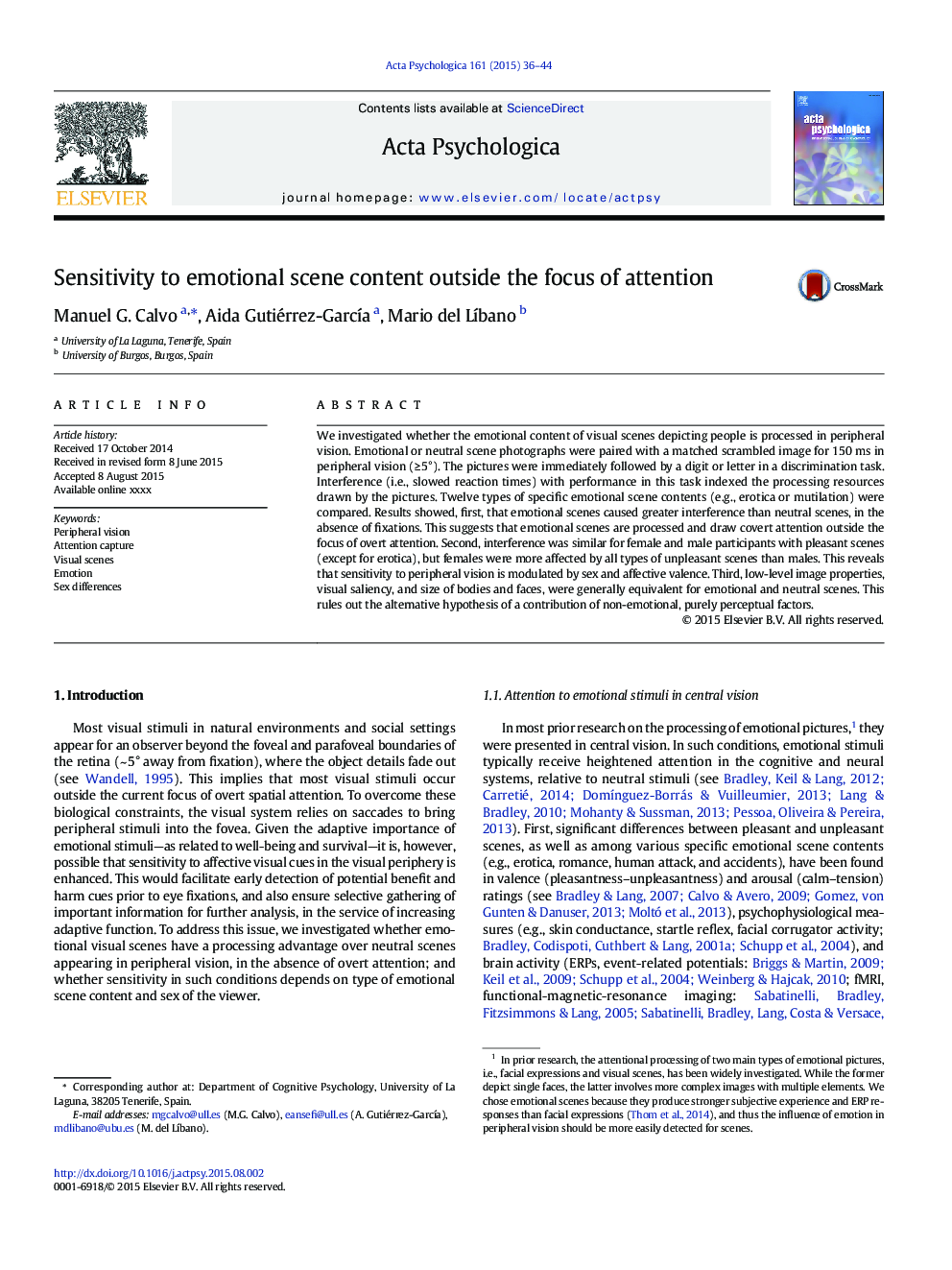| Article ID | Journal | Published Year | Pages | File Type |
|---|---|---|---|---|
| 7277209 | Acta Psychologica | 2015 | 9 Pages |
Abstract
We investigated whether the emotional content of visual scenes depicting people is processed in peripheral vision. Emotional or neutral scene photographs were paired with a matched scrambled image for 150 ms in peripheral vision (â¥Â 5°). The pictures were immediately followed by a digit or letter in a discrimination task. Interference (i.e., slowed reaction times) with performance in this task indexed the processing resources drawn by the pictures. Twelve types of specific emotional scene contents (e.g., erotica or mutilation) were compared. Results showed, first, that emotional scenes caused greater interference than neutral scenes, in the absence of fixations. This suggests that emotional scenes are processed and draw covert attention outside the focus of overt attention. Second, interference was similar for female and male participants with pleasant scenes (except for erotica), but females were more affected by all types of unpleasant scenes than males. This reveals that sensitivity to peripheral vision is modulated by sex and affective valence. Third, low-level image properties, visual saliency, and size of bodies and faces, were generally equivalent for emotional and neutral scenes. This rules out the alternative hypothesis of a contribution of non-emotional, purely perceptual factors.
Related Topics
Life Sciences
Neuroscience
Cognitive Neuroscience
Authors
Manuel G. Calvo, Aida Gutiérrez-GarcÃa, Mario del LÃbano,
